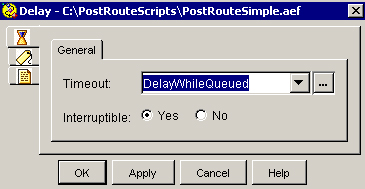Script Flow for the PostRouteSimple.aef Script
Procedure
| Step 1 | The Cisco Unified CCX script accepts the call from the Cisco Unified CallManager. | ||
| Step 2 | The Set Enterprise Call Info step put the value contained in the local CSQ variable into the Enterprise call.PeripheralVariable5. This means that value can then be used in the Cisco Finesse Desktop software or in a Cisco Unified ICME script. This might be used, for example, to display the current CSQ on the Agent Desktop. Example:
Expanded Call Variables are not used in this sample script. | ||
| Step 3 | The Request Route step requests a label from the Cisco Unified ICME system which the Cisco Unified ICME system sends back and which is stored in the RouteSelect variable. In this example, the returned value is a route point rather than an agent or CSQ identifier. For example: extension 13526. Example: | ||
| Step 4 | The Set Enterprise Call Info step puts the route point contained in the routeSelect variable into the enterprise call variable, call.PeripheralVariable2. This variable can be used to display the phone number on the Cisco Finesse Desktop. Example: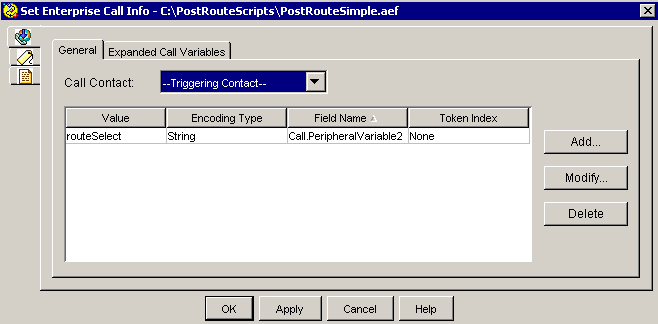
Expanded Call Variables are not used in this script. | ||
| Step 5 | The Cisco Unified CCX script, in the Call Redirect step, redirects the call to the selected route point and is stored in the string variable routeSelect. Example: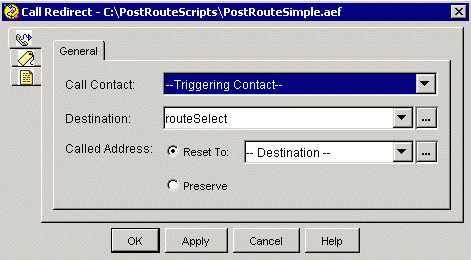
| ||
| Step 6 | In the case of failure from the Request Route step or the Call Redirect step, the script is designed to route the call through the Select Resource step to the default CSQ specified in the CSQ variable. Example: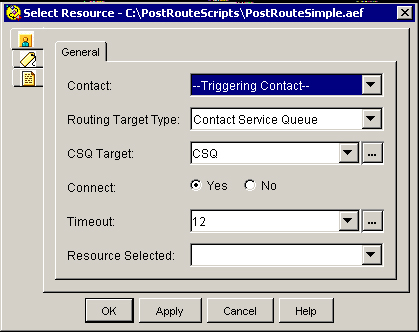
If no resource is available in the default CSQ, then the call stays queued until a resource becomes available or the call is dropped by the caller. 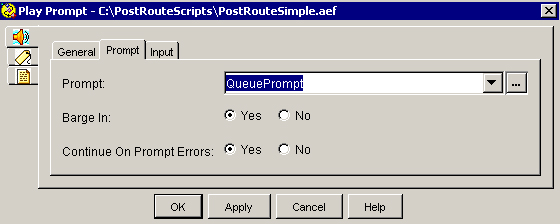
In the General tab of the Play Prompt Step:
In the Input tab of the Play Prompt Step:
|
